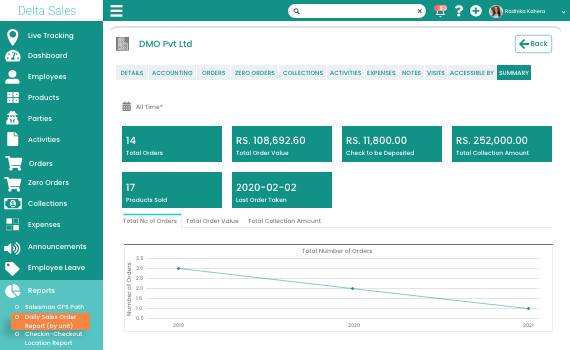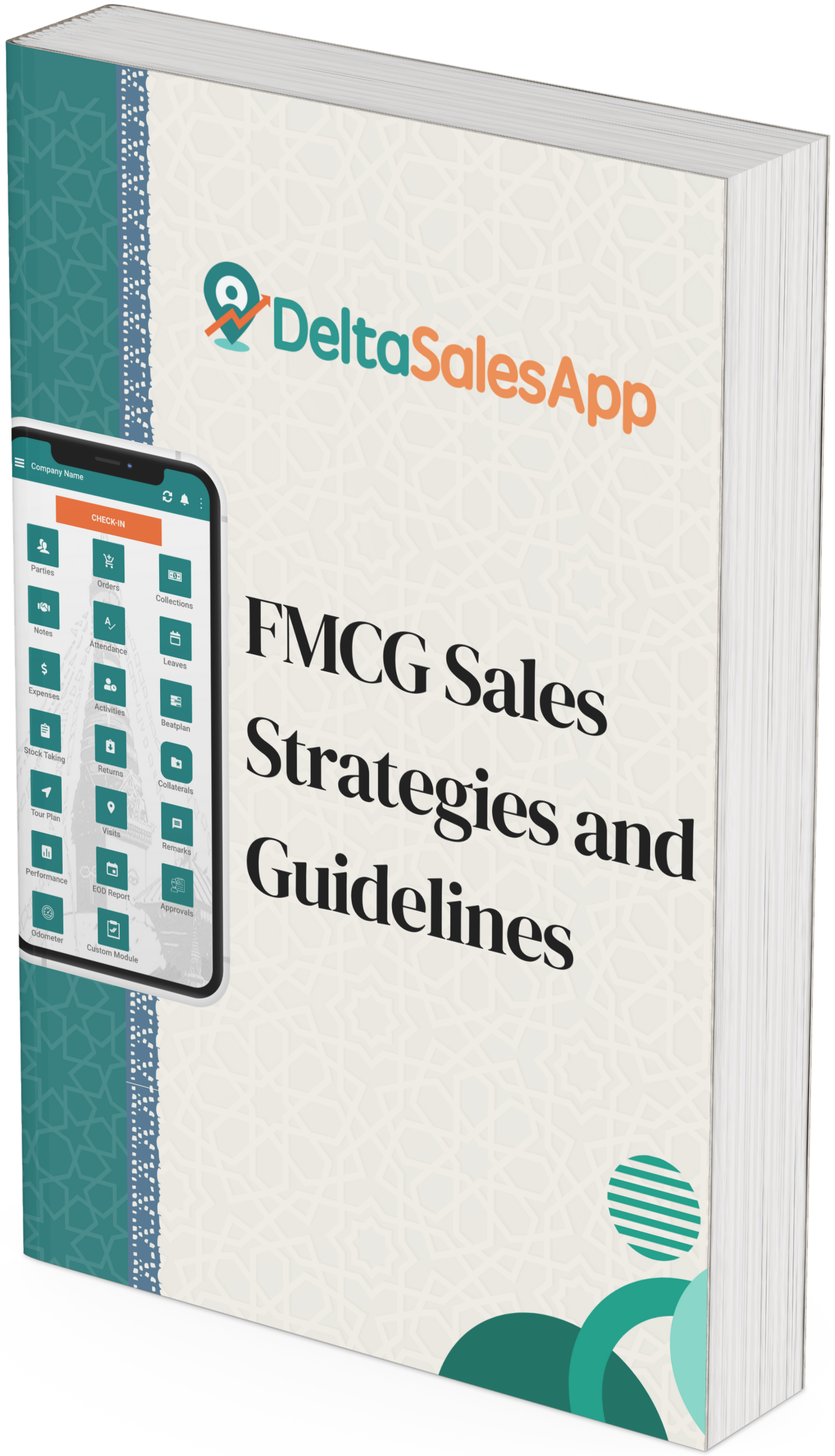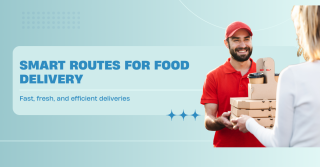Streamline Order Placement with B2B Customer Order App

In today’s competitive and rapidly evolving retail environment, speed, accuracy, and convenience have become the cornerstones of success. Traditional order-taking methods involving endless phone calls, handwritten notes, WhatsApp messages, and spreadsheets are increasingly falling short of business needs. These outdated practices introduce inefficiencies, delays, and errors that cost retailers and distributors both time and revenue. To thrive in this dynamic market, businesses must embrace digital solutions that simplify operations and enhance customer satisfaction. One such innovation revolutionizing the retail and distribution ecosystem is the B2B Customer Order App, a powerful, mobile-friendly tool that automates the order placement process, fosters real-time collaboration, and drives smarter business outcomes.
In this blog, we explore how the B2B Customer Order App is transforming retail operations by digitizing order placement, improving accuracy, and unlocking faster, smarter business workflows.
What is a B2B Customer Order App?
A B2B Customer Order App is a digital platform that allows retailers, distributors, and wholesalers to place and manage orders directly with suppliers or brands. Unlike traditional systems that depend on physical visits or slow communication channels, the app bridges the gap between businesses and their customers with a seamless, always-on interface.
Whether you’re a field sales team managing thousands of SKUs or a retailer looking for timely stock replenishment, a B2B Customer order app brings efficiency, transparency, and automation to the forefront of your supply chain.
How the B2B Order App Streamlines the Ordering Process
Traditional order methods typically involve a lengthy and manual process. Retailers must call sales reps during working hours, verify availability, discuss pricing, get confirmations, and wait for manual order entry into the system. This creates several points of friction, leading to:
Miscommunication and delays
Error-prone data entry
Missed sales opportunities outside working hours
Lack of real-time order status visibility
The B2B Customer Order App changes that narrative by digitizing every step of the process.
Eliminates Manual Processes
No more juggling between calls, WhatsApp chats, and handwritten notes. Orders are digitized, trackable, and synced with backend systems automatically, ensuring smoother operations with less human error.
24/7 Order Access
Retailers are no longer restricted to office hours or dependent on a sales representative’s availability. Orders can be placed at their convenience during off-hours, holidays, or even while managing the shop floor.
Instant Product Search & Filtering
Time is money. The app allows users to search for products, filter by stock availability, price range, or brand, and view product images and specifications in seconds dramatically reducing the time to order.
Repeat Orders in One Click
Retailers often place recurring orders. The app simplifies this by offering saved order templates or quick reorder options based on past history, improving speed and reducing friction.
Reduces Order Errors
With integrated pricing rules, product validations, and inventory syncing, the app ensures that orders are accurate and compliant with the latest terms. This drastically reduces the chances of incorrect or duplicated orders.
Benefits for Retailers and Distributors
Incorporating a B2B Customer Order App into your supply chain isn’t just about digitization it’s about unlocking tangible business value. By moving away from manual and error-prone processes, businesses can experience significant improvements in speed, accuracy, and collaboration. The app acts as a bridge between retailers and suppliers, making transactions smoother and relationships stronger.
Here’s what businesses gain:
Faster Order Turnaround
Orders are processed and confirmed instantly, reducing delivery times and ensuring better stock rotation.Improved Transparency
Both parties stay informed about order status, payments, and communication no more miscommunication or guesswork.Stronger Supplier Relationships
Efficient and error-free transactions lead to better trust and long-term business relationships.Data-Driven Decisions
Access to order history, purchasing patterns, and real-time insights helps in forecasting demand and planning inventory.
Implementing a B2B Customer Order App: What to Consider
While the advantages of adopting a B2B customer order app are clear from streamlining order processes to enhancing retailer satisfaction, successful implementation isn’t just about installing new software. It requires thoughtful integration, training, customization, and ongoing optimization. Here's a breakdown of the key considerations businesses must keep in mind before and during deployment:
1. Integration with Backend Systems
Seamless integration with your existing backend infrastructure is crucial. Your B2B order app must communicate in real-time with ERP, CRM, accounting, and inventory management systems. This ensures:
Automatic syncing of stock levels, pricing, and order status
Real-time updates for customers and sales teams
Elimination of double data entry and human error
Without proper integration, data silos may form, leading to inconsistent information, operational inefficiencies, and frustrated customers. Choose an app that supports APIs or middleware connectors for smooth data exchange across platforms.
2. Training for Users
Even the most powerful app will fail without proper user adoption. Retailers, field sales agents, and internal staff must understand how to navigate the app confidently.
Conduct interactive demos, onboarding sessions, and provide user guides
Incorporate visual aids, tooltips, and FAQs within the app itself
Ensure multilingual support, especially in regions with diverse linguistic needs
User-friendly UX and minimal learning curves are key. A well-trained user base not only maximizes the app's ROI but also reduces reliance on customer support teams.
3. Customization and Branding
Your order app is an extension of your brand. From the logo and color scheme to product categories and promotional messaging, every detail should reflect your company’s identity.
Custom UI/UX aligned with your branding guidelines
Naming conventions that match your product catalog
Personalized offers, pricing tiers, and retailer-specific catalogs
Such customization fosters brand recall, instills trust among retail partners, and makes the app feel like a natural part of your business ecosystem rather than a generic third-party tool.
4. Offline Access
In many emerging markets or remote areas, internet connectivity is often unreliable. Your app must support offline order entry, allowing users to:
Browse product catalogs and input orders without internet
Automatically sync data once a connection is re-established
This ensures sales continuity, particularly for field sales reps or rural retailers, and removes a common barrier to adoption in under-connected regions.
5. Analytics and Reporting

Data is a powerful asset when used correctly. A B2B customer order app should come equipped with a robust analytics dashboard that allows you to track:
Order trends by region, retailer type, or product category
Top-performing SKUs and underperforming items
Retailer engagement levels and app usage frequency
Fulfillment rates, delays, and customer service metrics
With these insights, businesses can refine their strategies, optimize inventory, run targeted campaigns, and continuously improve the customer experience.
Final Thoughts
Digitizing order management is no longer a futuristic idea, it's a competitive necessity. With rising customer expectations, increasing operational complexity, and intense market pressure, businesses must adapt or risk falling behind. A B2B Customer Order App enables companies to modernize their supply chains, foster stronger relationships, and unlock operational efficiencies at scale.
From instant ordering to data-driven decision-making, the transformation that a B2B ordering system offers is not just about convenience, it's about building a smarter, more resilient business.
Ready to transform your retail operations?
Invest in a B2B Customer Order App and take the first step toward faster, smarter, and more profitable order management.









